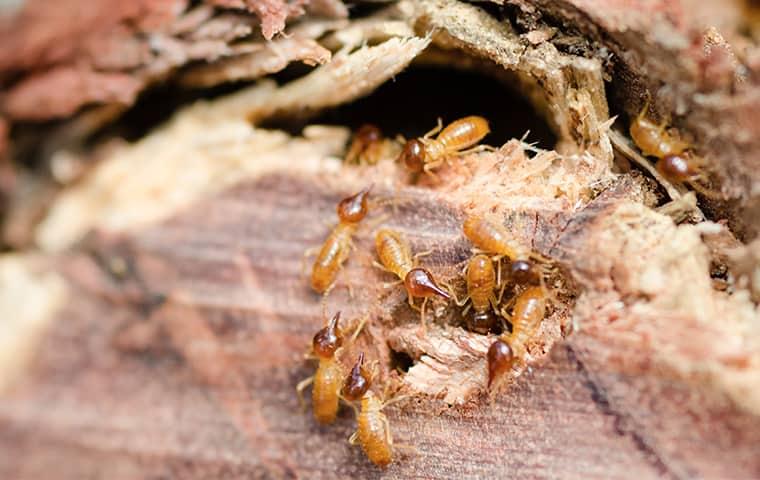Five Signs You May Have A Termite Problem On Your South Bend Property
Wood is not a material that is meant to be eaten, or at least this is the case for most creatures. Termites in South Bend are one of the few exceptions to this general truth. These destructive pests love consuming wood so much, they build massive colonies and work together in perfect harmony to gather as much of it as possible. The only problem is that termites are hard to identify, especially when they invade homes. To help you spot these invasive and destructive pests, here are five signs that point to a termite infestation.

The Most Common Termites In South Bend
Indiana is no stranger to termites. We have a larger variety of these pests than most other states have. This includes drywood termites, dampwood termites, Formosan termites, and subterranean termites. Of these four invasive species, subterranean termites are the most common, and Formosan termites are the most destructive.
Although different in appearance and the type of wood they destroy, all termites have many things in common. For one, termites are social creatures that live in large nests, most commonly underground. Each colony of termites consists of workers, soldiers, and reproductives. During certain times of the year, termites will produce swarmers, winged reproductive termites tasked with leaving the nest and building a new home. This leads us to our first sign you can use to identify termites in your South Bend home.
Termite Sign Number One: Swarmers
Most termites prefer to stay underground or within a structure of wood. Swarmers are the one exception. These winged reproductive termites are often described as white ants due to their many similarities in appearance. The presence of these flying pests or their wings around your home is a good way to know a termite colony is nearby.
Termite Sign Number Two: Moisture Damage
Subterranean termites and damp wood termites only invade wood that is water damaged or softened by rot or decay. This type of damage spreads as these termites tunnel through homes. Signs that your home has termite related moisture damage include tight-fitting windows and doors, bubbling wallpaper/paint, and sagging drywall.
Termite Sign Number Three: Mud Tubes
Some termites cannot withstand the elements. To stay moist while invading homes, these types of termites will build mud tubes that crawl up exterior foundations. These mud tubes are most commonly needed when a home has a non-wood barrier between exterior soil and its structural wood.
Termite Sign Number Four: Structural Damage
All termites cause structural damage around homes. Some common damage you should keep your eye out for include overly squeaky floorboards, pin-sized holes, and visible galley ways running through structural wood.
Termite Sign Number Five: Frass
Frass, also known as termite droppings, is a common sign left behind by drywood and Formosan termites. Find this sawdust-like material beneath termite holes stuck to the wall or on the baseboards below.
The Best Way To Prevent Termites
Despite all the signs termites leave throughout homes, they can still be difficult pests to identify. To know for certain if your home does or does not have a termite infestation, let the experts at Termishield take a look. In addition to thorough inspections, we also offer advanced termite exclusion and elimination. We will make sure these invasive wood-destroying pests stay away from your property where they belong.
Termishield is your premier option for pest problems. Give us a call today or through our website to learn more about our termite control services or to schedule a service visit for your South Bend property.
Tags: termite control | termite prevention | termites in south bend |
Request Your Free Inspection
Complete the form below to schedule your no obligation inspection.

